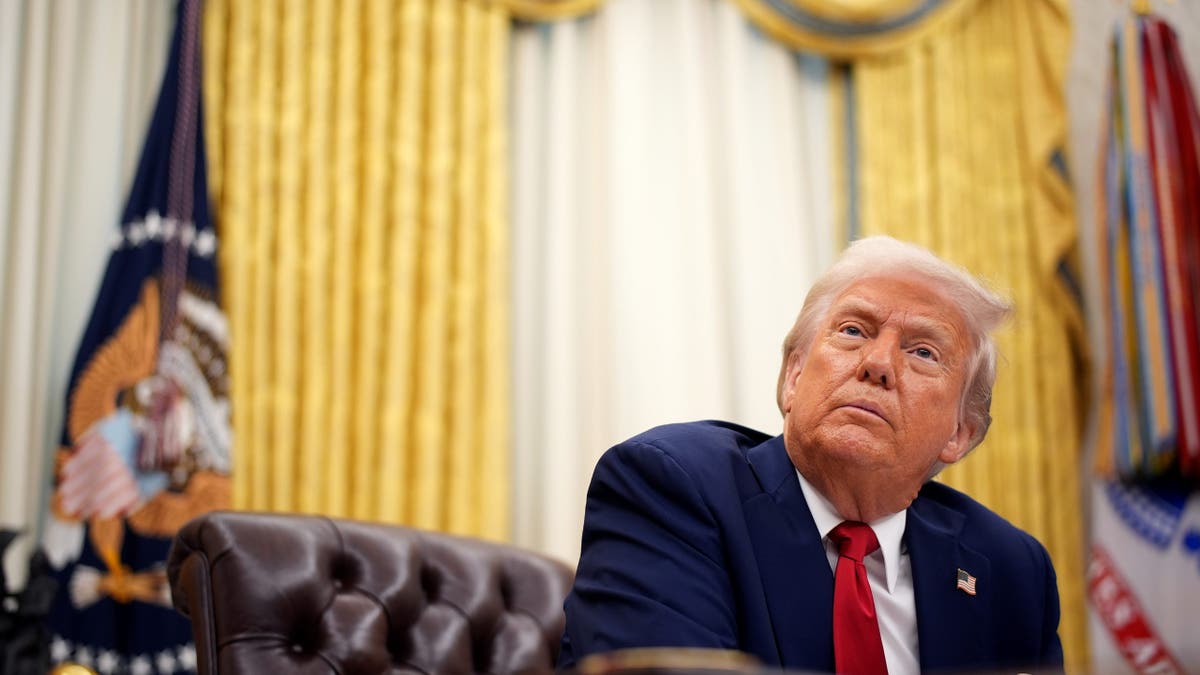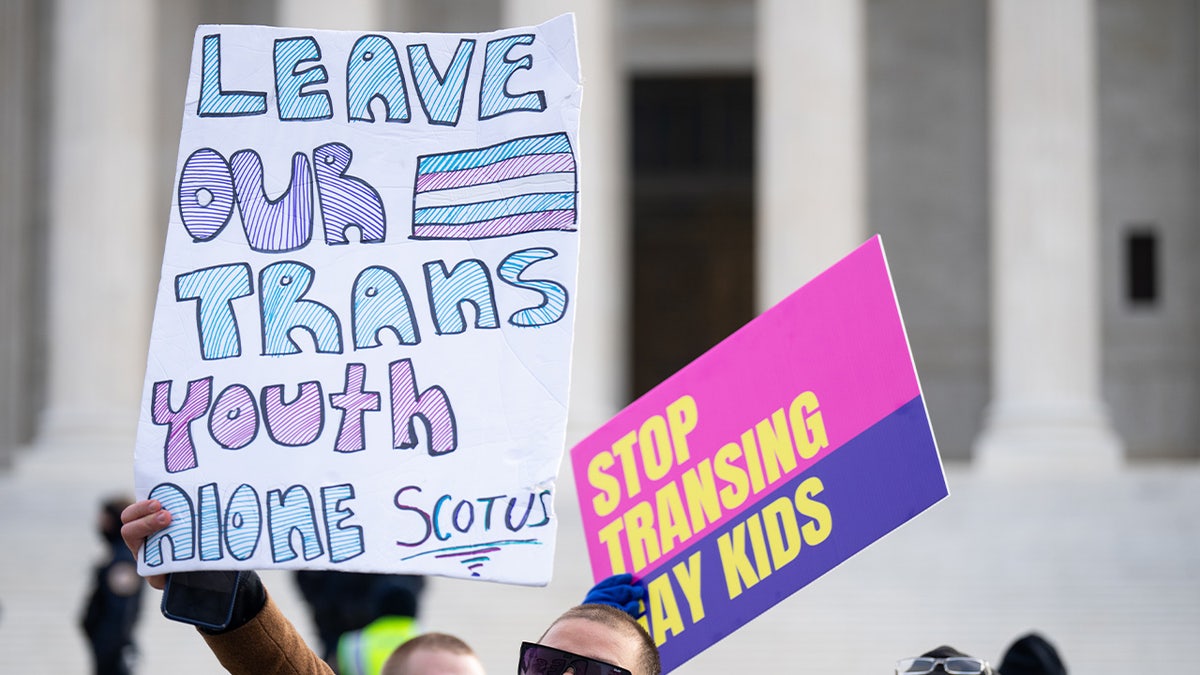INTERNACIONAL
Legalized same-sex marriage turns 10 after landmark Supreme Court decision reshaped American law and culture
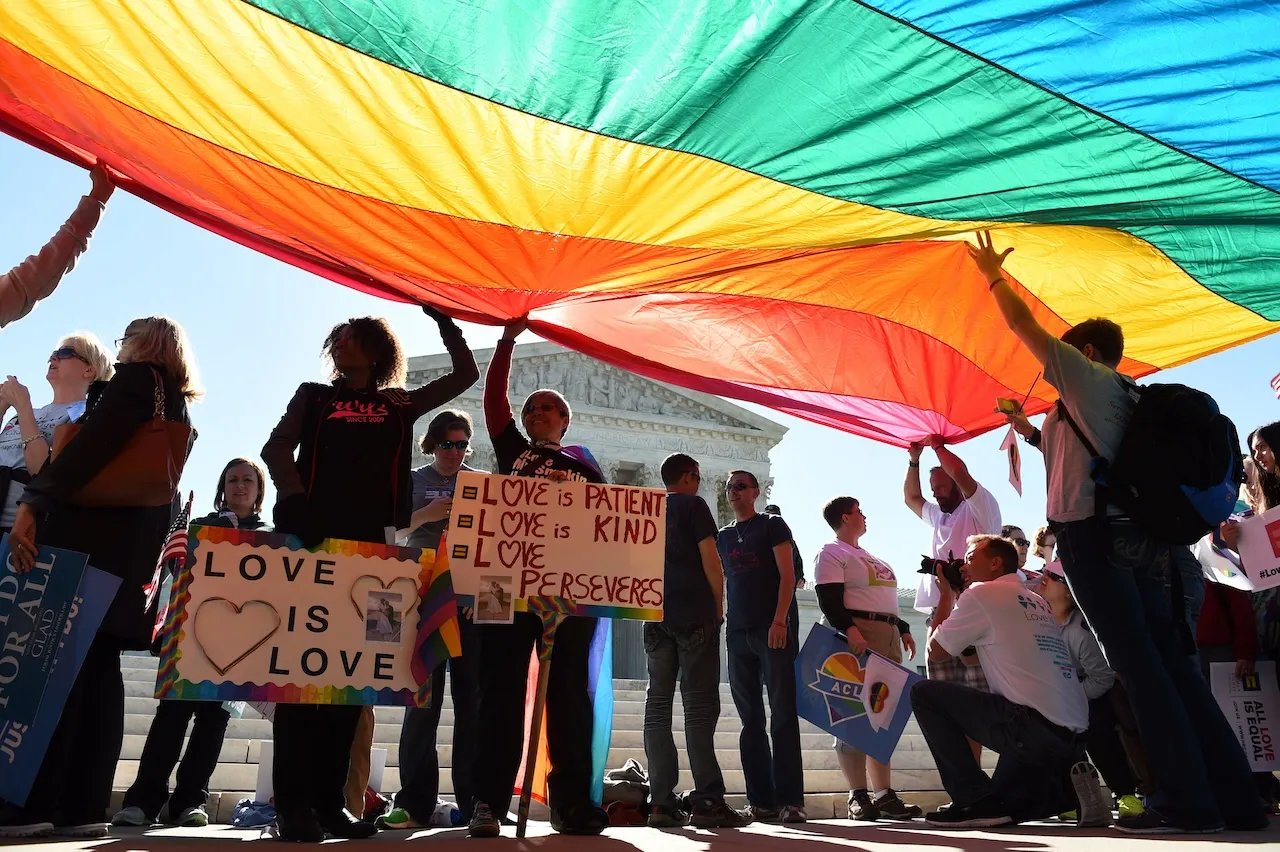
NEWYou can now listen to Fox News articles!
The Supreme Court 10 years ago voted to extend the definition of marriage to include same-sex couples, a landmark 5-4 ruling that changed the course of U.S. history — touching off profound changes in public opinion, as well as seismic cultural shifts.
«No longer may this liberty be denied,» Supreme Court Justice Anthony Kennedy wrote for the majority. «The court now holds that same-sex couples may exercise the fundamental right to marry.»
The June 2015 decision in Obergefell v. Hodges ensured same-sex couples were guaranteed the same protections and benefits as their heterosexual peers.
However, the ruling is not without its detractors. In fact, 10 years after the high court’s decision, recent polling shows that public opinion on same-sex marriage is more divided than ever.
GORSUCH, ROBERTS SIDE WITH LEFT-LEANING SUPREME COURT JUSTICES IN IMMIGRATION RULING
Plaintiffs in the Obergefell v. Hodges case are seen outside the Supreme Court in 2015. Ten years later, in 2025, there is still widespread public support for the Supreme Court ruling. (Ken Cedeno/ Corbis via Getty Images)
The 10-year anniversary of Obergefell also comes at a tense political moment. The White House and Congress are governed, as of January 2025, by a new conservative majority — sidelining progressives and emboldening at least some Republican lawmakers who have signaled interest in challenging the Supreme Court’s landmark decision.
It also comes as the conservative-majority Supreme Court has taken up important cases involving LGBTQ+ eduction, gender-related care and more.
Ten years after the court’s landmark decision, here is a look at where things stand.
Public opinion
The nationwide legalization of same-sex marriage has made such unions more visible, increasing the number of Americans with personal connections to couples directly affected by the Supreme Court’s ruling.
INTERNACIONAL
Scoop: Democrats launch billboards outside hospitals to target Trump for ‘Gutting Rural Health Care’

NEWYou can now listen to Fox News articles!
FIRST ON FOX: The Democratic National Committee (DNC) on Tuesday launched billboards outside three rural hospitals that Democrats say are closing or cutting back services due to President Donald Trump’s recently signed domestic policy package.
The DNC says it placed billboards in Silex, Missouri; Stillwell, Oklahoma; and Missoula, Montana, to make sure that rural voters, who overwhelmingly supported Trump in last year’s presidential election, «know who is responsible for gutting rural health care.»
The Democrats’ national party committee, in taking aim at the sweeping and controversial tax cut and spending measure, named the «One Big Beautiful Bill» by Trump and congressional Republicans, argued that «residents are already seeing the firsthand effects of Trump’s Budget Betrayal.»
The billboards were shared first with Fox News Digital on Tuesday morning.
RNC CHAIR SAYS ‘BIG BEAUTIFUL BILL’ KEY TO GOP’S MESSAGING EFFORT HEADED INTO MIDTERMS
The DNC is targeting rural voters with new billboards in Missouri, Oklahoma, and Montana, blaming Trump’s ‘Big Beautiful Bill’ for hospital closures and cuts to health services. (Democratic National Committee)
The measure is stuffed full of Trump’s 2024 campaign trail promises and second-term priorities on tax cuts, immigration, defense, energy and the debt limit.
It includes extending the president’s signature 2017 tax cuts and eliminating taxes on tips and overtime pay.
By making his first-term tax rates permanent — they were set to expire later this year — the bill will cut taxes by nearly $4.4 trillion over the next decade, according to analysis by the Congressional Budget Office and the Committee for a Responsible Federal Budget.
POLITICAL FIGHT OVER ‘BIG BEAUTIFUL BILL’ IS FRONT-AND-CENTER IN KEY SENATE RACE
The measure also provides billions for border security and codifies the president’s controversial immigration crackdown.
The $3.4 trillion legislative package is also projected to surge the national debt by $4 trillion over the next decade, but many Republicans dispute the projection by the Congressional Budget Office (CBO).
And the new law also restructures Medicaid — the almost 60-year-old federal program that provides health coverage to roughly 71 million low-income Americans. The CBO this week estimated that 10 million people could lose their health insurance over the next decade.
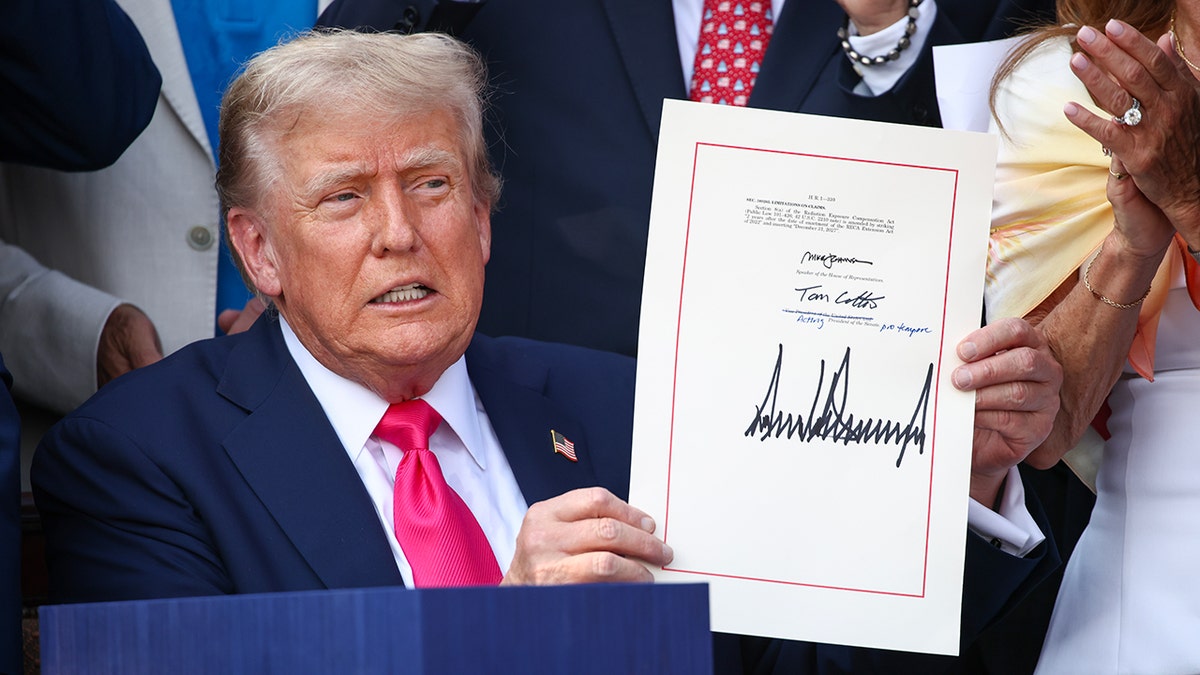
President Trump celebrates signing the ‘One Big Beautiful Bill’ into law on July 4, 2025 — a sweeping policy package Democrats claim guts rural health care services. (Samuel Corum/Getty Images)
The changes to Medicaid, as well as cuts to food stamps, another one of the nation’s major safety net programs, were drafted in part as an offset to pay for extending Trump’s tax cuts. The measure includes a slew of new rules and regulations, including work requirements for many of those seeking Medicaid coverage.
Democrats, for months, have repeatedly blasted Republicans over the social safety net changes. And they spotlighted a slew of national polls last month and this month that indicate the bill’s popularity in negative territory.
WHAT’S ACTUALLY IN TRUMP’S ‘BIG BEAUTIFUL BILL’
The DNC claims that the bill, which Trump signed into law on July 4 after the GOP-controlled House and Senate narrowly passed the measure along near-party-line votes, will gut Medicaid, forcing rural hospitals and nursing homes to close their doors.
«Rural hospitals were already on the brink of collapse thanks to Donald Trump, but now he has put the last nail in the coffin for rural hospitals with his billionaire budget bill,» DNC chair Ken Martin argued in a statement to Fox News.

DNC Chair Ken Martin is leading the charge against Trump’s domestic policy package, accusing Republicans of abandoning rural Americans by slashing Medicaid funding. (Fox News – Paul Steinhauser)
Martin highlighted that «in states across the country, hospitals are either closing their doors or cutting critical services, and it’s Trump’s own voters who will suffer the most. This is what Donald Trump does — screw over the people who are counting on him.»
Republican National Committee (RNC) chair Michael Whatley, in an interview with Fox News Digital last week, spotlighted that «if you take a look at the Medicaid side of this conversation, the fact is that we’re going to be moving illegal aliens off of Medicaid. We’re going to be strengthening the program. Those are things that absolutely need to happen.»
FIRST ON FOX: HOUSE REPUBLICANS LAUNCH FIRST ADS TOUTING ‘BIG, BEAUTIFUL BILL’
And he argued that «the tax cuts are going to be very, very strong indicators, no tax on tips, no tax on overtime, no tax on Social Security. Plus we’re extending those Trump tax cuts. This is going to help every family in every community all across the country.»
Included in the megabill is a $60 billion fund, named the Rural Health Transformation Program, which Republicans say would offset cuts to Medicaid and would also help overcome long-standing health disparities that rural communities have faced.
CLICK HERE TO GET THE FOX NEWS APP
But the DNC says their new analysis «shows this funding was never going to be enough to make a difference.»
And the DNC points to a non-partisan breakdown of the new law, which says that half of the rural hospital funding will be split evenly among all states that apply, regardless of need.
Both parties see the «big, beautiful bill» as a key part of their messaging heading into next year’s midterm elections, when the Republicans will be defending their slim majorities in the House and Senate.
INTERNACIONAL
‘Trump has changed the game’: NATO enters brave new era under pressure from US, Russia

NEWYou can now listen to Fox News articles!
The effects of both President Donald Trump and Russian President Vladimir Putin’s war in Ukraine on NATO have forced swift and potentially permanent changes in the alliance.
Following last month’s announcement that the majority of NATO’s 32 members had agreed to increase defense spending to hit 5% of each nation’s GDP, Trump drew headlines after he drastically changed his tone and declared the alliance was no longer a «rip-off.» But his previously tough stance saw undeniable results in how the security group operates.
«Trump has changed the game,» Peter Doran, an expert on Russia, Ukraine, and transatlantic relations, and an adjunct senior fellow at the Foundation for Defense of Democracies, said. «[Then] there’s Vladimir Putin, who has clearly awakened the Europeans to the danger that Russia presents to them.»
Beginning in his first term, Trump made clear his resentment that only five NATO allies were meeting their 2% GDP defense spending pledges, and those criticisms rang loudly following his return to the campaign trail for the 2024 election amid Russia’s war in Ukraine.
Questions ran rampant over whether Trump would not only continue to provide strong U.S. support for Ukraine, but whether Washington would remain a reliable ally for Europe when confronted with the reality of a war-ready Russia.
RUSSIA SAYS NATO THREATENS WWIII IN LATEST DETERRENCE PLAN THAT COULD TAKE DOWN KALININGRAD ‘FASTER THAN EVER’
President Donald Trump held a press conference after the NATO Heads of State and Government Summit in The Hague, Netherlands on June 25, 2025. (Dursun Aydemir/Anadolu via Getty Images)
Though an increasing number of NATO nations began upping their defense spending commitments following Russia’s 2022 invasion of Ukraine, several allies began pushing for changes before Trump even re-entered the White House.
Trump not only threatened to remove troops from Europe and divert them to positions in Asia, but he suggested he might not come to the defense of a NATO ally should they be attacked, infamously saying at a February 2024 campaign event, «You don’t pay your bills; you get no protection. It’s very simple.»
«I would encourage them to do whatever the hell they want,» he said in regard to the threat of a Russian attack on a NATO nation.
But his tough rhetoric appeared to yield results.
NATO Secretary-General Mark Rutte — who has shared a good relationship with Trump — jokingly referred to Trump’s geopolitical tendencies for unconventional statesmanship, particularly after he used the f-word in a fiery rant about a breakdown in the Iran-Israel ceasefire during last month’s summit when he said, «Daddy has to sometimes use strong language.»
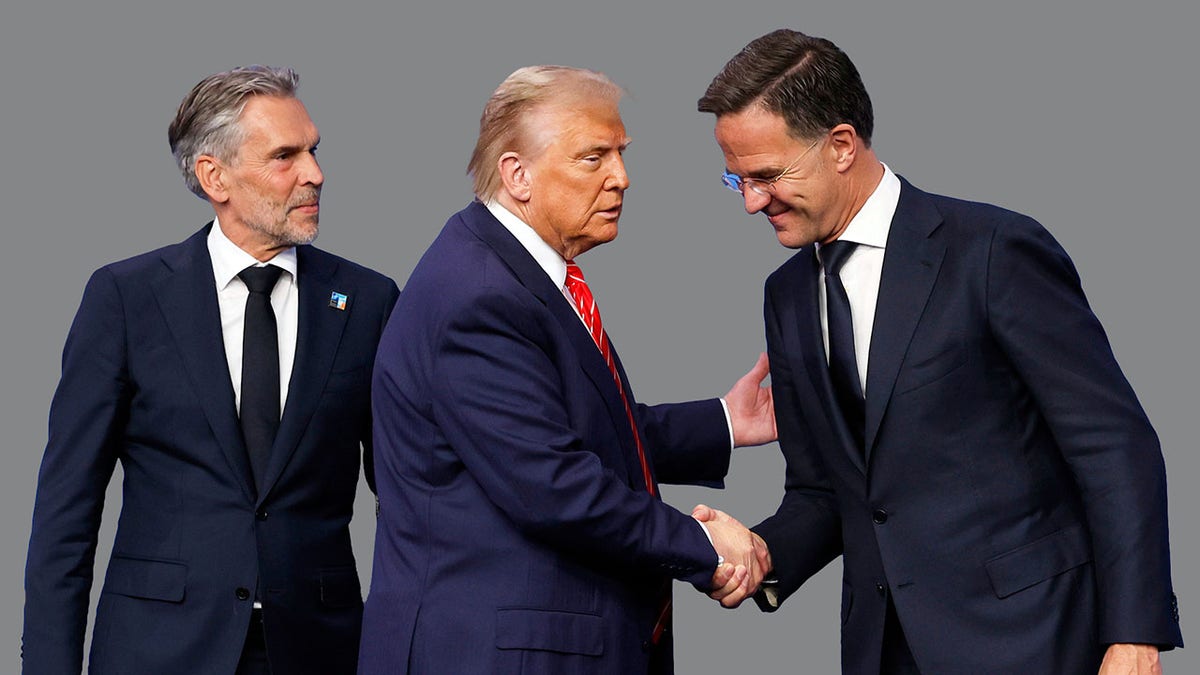
President Donald Trump is greeted by NATO Secretary General Mark Rutte (right) and Netherland Prime Minister Dick Schoof (left) at the official welcoming ceremony for the 2025 NATO Summit at The Hague on June 25, 2025. (AP Images)
«Donald Trump’s a real contrast to Joe Biden,» Peter Rough, a senior fellow and the director of the Hudson Institute’s Center on Europe and Eurasia, told Fox News Digital. «Joe Biden, bear hugged the NATO allies to the point of smothering them with adoration, and that caused them, I think, to sit back and relax a little bit.
«Donald Trump, by contrast, exposes the allies to just enough hostile power to encourage them to do more, but it doesn’t expose them so much that it might invite a Russian attack,» he added. «And I think that’s the art of the deal, so to speak.»
PUTIN MUM ON TRUMP’S 50-DAY ULTIMATUM, KREMLIN OFFICIALS CLAIM RUSSIA ‘DIDN’T CARE’
But while experts agree it is unlikely that NATO nations would have stepped up their spending on defense even more without the pressure Trump put on them, Russian President Vladimir Putin’s role in re-invigorating NATO cannot be ignored.

Participants of a high-intensity training session, seen at the end of the exercise at the Nowa Deba training ground on May 6, 2023 in Nowa Deba, Poland. (Artur Widak/NurPhoto via Getty Images)
«If Vladimir Putin and the Russians in the post-Cold War period had sought to engage Europe and chosen more of a democratic future, there might not be a NATO Alliance today,» Rough said. «But Putin has given NATO a real reason to exist, and President Trump has done his part by… cajoling, pushing, nudging the allies.»
But not everyone is convinced that the changes NATO is undergoing are permanent.
RUSSIA THREATENS WEST WITH ‘PREEMPTIVE STRIKES’ AS NATO LOOKS TO DELIVER PATRIOTS ‘AS QUICKLY AS POSSIBLE’
Mike Ryan, who formally served as Deputy Assistant Secretary of Defense for European and NATO Policy, told Fox News Digital he does not necessarily believe that the Trump and Putin presidencies have permanently changed the NATO alliance but said, «Both have energized and focused [the] allies.»
«But that’s what happens in NATO when confronted with an external crisis,» he added.
Upon Trump’s re-election there was increased concern about how the U.S. would be perceived by its allies, whether it was still considered a trusted partner or if it was returning to isolationist tendencies not seen since the lead up to World War II.

US President Donald Trump and Ukrainian President Volodymyr Zelenskyy meet during the NATO Heads of State and Government Summit in The Hague, Netherlands on June 25, 2025. (Getty Images)
«The answer is very clearly no,» Doran argued. «If anything, Trump came back and did exactly the same thing he did in the first administration, and that was to remind the Europeans that they are chronically under-spending on defense.
«If anything, Trump hasn’t changed at all. It’s the Europeans’ awareness that they need to spend more, and they have responded positively to that challenge, and that is very encouraging,» he added.
Though Rough cautioned there is a balance to be maintained when putting such high pressure on U.S. allies.
CLICK HERE TO GET THE FOX NEWS APP
«Donald Trump’s created a lot of anxiety in Europe, and it’s important to convert that anxiety into policy wins,» he said. «If that anxiety is allowed to linger or is exacerbated or made worse, then one could see some European states push more for so-called strategic autonomy, or a separation from the U.S.
«But if that anxiety translates to… real policy victories and partnerships with Europe, then I think it can be a healthy thing,» Rough said.
INTERNACIONAL
“No estoy defendiendo la inmortalidad, solo que elijamos no morir”: Bryan Johnson habló sobre longevidad, IA y la revolución del Project Blueprint
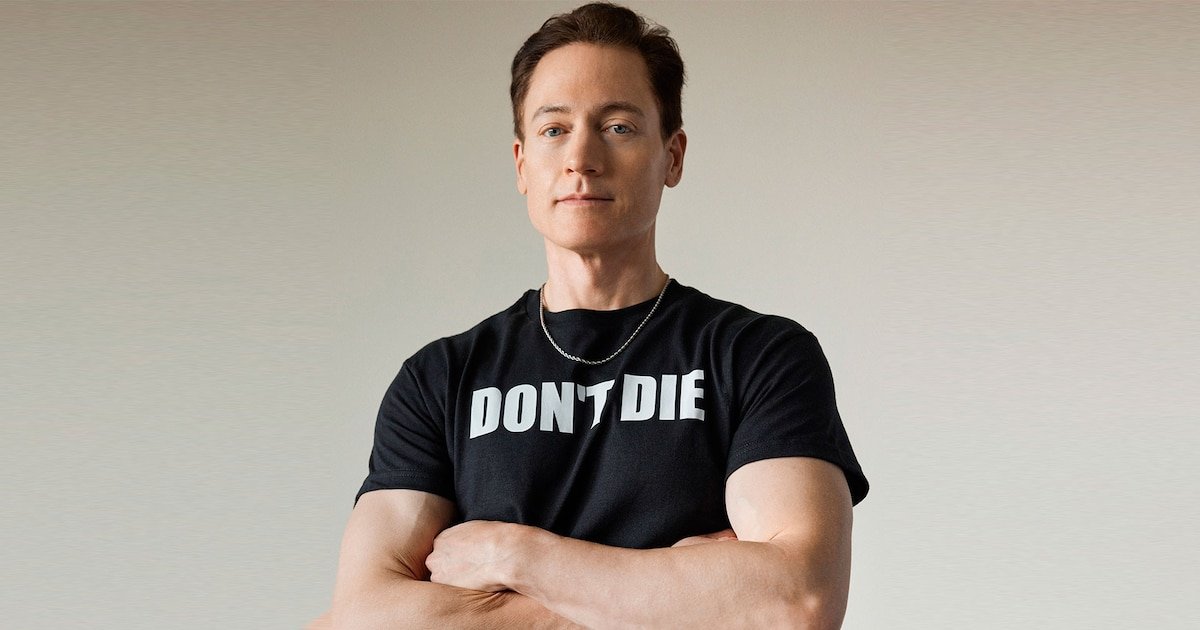
Hace algunos años, Bryan Johnson saltó a la fama mundial como el multimillonario de la longevidad, pero su historia y ambiciones revelan mucho más que rituales y comportamientos llamativos. La iniciativa Project Blueprint, que lidera desde California, es tanto experimento personal como empresa biotecnológica: une inteligencia artificial, cuantificación exhaustiva y sistematización para desafiar los límites del envejecimiento humano.
Johnson cree que la clave para prolongar la existencia reside en la automatización estricta de la rutina, complementada por tecnología de punta y una filosofía centrada en la supervivencia.
Su residencia en Venice, California, se asemeja a un laboratorio, donde ningún detalle queda al azar: desde la comida y los suplementos hasta la recolección y almacenamiento de muestras biológicas, toda variable se encuentra bajo control.

Johnson somete su cuerpo a un régimen tan meticuloso como exhaustivo: su día inicia antes del amanecer con exposición a luz de 10.000 lux, control de temperatura, aplicación de sueros, ejercicio, terapia de luz roja, oxigenación, sauna y múltiples pruebas médicas. La dieta es exclusivamente vegetal, restringida a la mañana y antes del mediodía, e incluye decenas de suplementos para optimizar métricas que él considera clave.
En tanto, desde 2021, la estrategia de Blueprint incluye alimentar una inteligencia artificial —Bryan AI— con todos sus datos y declaraciones, con el objetivo de perfeccionar su régimen y avanzar hacia la potencial transferencia de conciencia a sistemas computacionales.
La visión de Johnson trasciende la salud personal: postula que la supervivencia debe ser el nuevo eje ético, capaz de suplantar la búsqueda de riqueza y estatus en el mundo contemporáneo.

En búsqueda de más información, el equipo de Wired visitó el peculiar hogar del millonario. A cada paso, notó detalles tan pulidos como los fruteros repletos de kiwis y plátanos, y al mismo tiempo tan imperfectos como una naranja mohosa, “algo, al parecer, huele mal en la finca de Johnson”, afirmaron.
Un dilema que, en palabras de quienes transitaron por este lugar, materializa un contraste y dilema de este personaje: Johnson construye un entorno artificial casi perfecto, pero choca de frente con los límites y “fallos” de la condición humana.
Durante la conversación, Johnson explica con detalle su rutina nocturna: “He construido toda mi existencia en torno al sueño”, afirma y deja en claro que el descanso no es solo una necesidad biológica, sino el pilar central de su estrategia de longevidad. “Mi perfil de sueño es el de alguien de veintitantos años: duermo ocho horas y 34 minutos, me levanto menos de una vez por noche, y tengo un 94 % de eficiencia”, detalla.

Su jornada, dice, empieza la noche anterior: se acuesta con precisión quirúrgica, se duerme en minutos y se despierta antes del amanecer, exponiéndose a luz intensa y midiendo parámetros como la temperatura basal, que en su caso ha descendido más de dos grados: “Hay pruebas de que las especies con temperaturas más bajas viven más”, afirma.
Cuando se le plantea, de manera directa, si alguna vez morirá —una pregunta que más parece filosófica que biológica—, Johnson responde sin titubeos: “Falso”, ya que todos sus datos y discursos ahora se encuentran dentro inteligencia artificial personalizada.
“Actualmente, de forma muy rudimentaria, tengo una IA de Bryan que ha asimilado todo lo que he dicho”, un cambio que, según afirma, redefine el valor de seguir vivo: “A medida que la tecnología mejora, el bien más preciado será la existencia; la inmortalidad, tal como la concebíamos antes, a través de los logros, la descendencia o la vida después de la muerte, se devaluará en comparación con la existencia. Esa es mi apuesta fundamental para el futuro”.

Como figura pública obsesionada con la longevidad, Johnson no ha escapado a las críticas. Algunas figuras han señalado que su nivel de control podría rozar comportamientos obsesivos o incluso patológicos.
Es más, durante la entrevista, se comparó su comportamiento con patrones de un trastorno de la conducta alimentaria (TCA), una afirmación que Johnson no evade: “La mayoría de la gente que conozco en Estados Unidos tiene un trastorno alimentario. Claramente, luché con el control de mi ingesta de alimentos”.
Defiende su enfoque como una estrategia racional frente a un entorno saturado de estímulos adictivos. “¿Por qué iba a luchar contra decisiones cotidianas, diversas y, en última instancia, irrelevantes, cuando pueden automatizarse? Prefiero dedicar mi escasa capacidad cerebral a pensar en cosas de mayor nivel, como el futuro de la raza humana”, sostiene.
La automatización —para Johnson— es una estrategia de autonomía frente a un entorno saturado de algoritmos que incentivan el consumo y las adicciones. Su objetivo es crear un entorno de máxima libertad personal, donde las decisiones menores están automatizadas y controladas por datos; solo así puede concentrar energía intelectual en desafíos trascendentes.
En la entrevista, Johnson deja en claro que su cruzada trasciende el negocio o la autoexperimentación. Proclama la necesidad de una nueva ideología global: “La nueva respuesta a la existencia es que la existencia misma es la virtud suprema. No estoy defendiendo la inmortalidad ni la utopía. Solo digo que elijamos no morir”, afirma.
Con esta premisa, busca reemplazar antiguos sistemas de creencias y paradigmas políticos con una suerte de “religión” centrada en la supervivencia —individual y colectiva—, capaz de alinear tanto a humanos como a algoritmos bajo el principio Don’t Die.
Johnson reconoce que la fama no es un efecto colateral, sino un instrumento: “Si tuviera que elegir entre la fama y mil millones de dólares, la elegiría cien veces. Es muy difícil de conseguir. Tiene un valor excepcional”. Según él, solo con ese alcance es posible impulsar la ideología “de mayor crecimiento en la historia” y guiar la transición de la especie hacia una nueva etapa evolutiva.
Cree, en definitiva, que “algo surgirá y llenará este vacío, ya sea ‘No Mueras’ o algo más”. Su ambición no es solo extender la vida, sino fundar un nuevo marco de sentido que le dé respuesta —en términos prácticos y éticos— a los grandes dilemas del siglo XXI: la conciencia, la muerte y el futuro de la humanidad frente a la inteligencia artificial. Es que, en última instancia, espera que el legado de su experimento no se mida solo en métricas de salud o tecnología.
El ascenso de Johnson no estuvo exento de conflictos. Enfrentó disputas legales con su expareja Taryn Southern y varios exempleados, cuestionamientos por el uso extensivo de acuerdos de confidencialidad y reportajes que pusieron en duda la integridad de sus productos y la estabilidad financiera de su empresa. Pero, independientemente del futuro comercial de Blueprint, Johnson insiste en que su propósito real trasciende lo económico.
Su empeño está en sostener una visión filosófica y radicalmente transparente sobre la existencia: “Quiero que, en el siglo 25, digan que fue entonces cuando la humanidad descubrió que era la primera generación que no moriría”, afirma.
Lo que propone es un desplazamiento de las prioridades humanas: “Ahora mismo, lo único que tenemos en común es que nadie quiere morir”. En su visión, la inteligencia artificial no es solo una tecnología, sino un punto de inflexión que obliga a repensar cómo vivimos y decidimos. “Cuando surgen tecnologías transformadoras, necesitamos nuevas ideologías que nos ayuden a tomar decisiones cotidianas. Hoy no existe ninguna”, advierte.
Por eso concibe su cruzada como algo más que biotecnología o disciplina física: se trata de diseñar un nuevo marco de sentido frente al cambio irreversible: “No estoy defendiendo la inmortalidad. Solo estoy diciendo que elijamos no morir”, concluye.
bryan johnson

 POLITICA3 días ago
POLITICA3 días agoJuan Carlos Maqueda defendió la condena contra Cristina Kirchner: “Hay una sensación de que se hizo Justicia y que no hay impunidad”

 POLITICA2 días ago
POLITICA2 días agoExpulsada del Gobierno, Victoria Villarruel empieza a tomar distancia, pero no tiene proyecto político para este año

 POLITICA2 días ago
POLITICA2 días agoLa CGT evalúa adelantar a octubre el recambio de sus autoridades y define una movilización contra Milei


